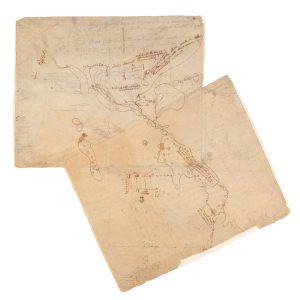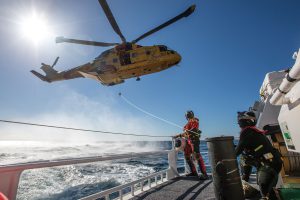
People & Culture
Kahkiihtwaam ee-pee-kiiweehtataahk: Bringing it back home again
The story of how a critically endangered Indigenous language can be saved
- 6310 words
- 26 minutes
This article is over 5 years old and may contain outdated information.
People & Culture

Three minutes. That’s how long it took to solve a 163 year-old mystery.
“It was just disbelief that it happened so quickly,” says underwater archaeologist Ryan Harris. In 2010, he led a Parks Canada team that discovered the remains of the HMS Investigator, lost in Canada’s Arctic since its crew abandoned ship more than a century and a half ago.

Now a new book chronicles the turbulent life of the HMS Investigator. As “Lost Beneath the Ice: The Story of the HMS Investigator” reveals, after a year of preparation for the search, it took just three minutes to spot the sunken ship using sonar. At the time, Harris says, they were just testing the equipment to make sure all systems were running.
The book spans the life of the ship, from its Victorian-era voyage to its present-day, whirlwind discovery under the ice of Mercy Bay, Northwest Territories. With text by Andrew Cohen, historical sketches, and photographs from Parks Canada, the book paints a vivid picture of then and now.
“It juxtaposes the challenges and perils of Arctic exploration in the mid-19th century with the challenges of Arctic scientific research today,” says Harris. “While we don’t have to face the same perils and prospects of death, we do have to cope with the ice and weather and the remoteness of the location.”
In 2011, Harris’s team returned to that remote location to view the ship up close. They completed more than 100 dives to the wreck over nine days. The photos they took of the ship and the artifacts they found — laid out in “Lost Beneath the Ice” — tell the end of a story that began in England, where the Investigator set out for the Arctic as a search party.

It was a rescue mission gone wrong. Captain Robert McClure started aboard the Investigator in January 1850 in search of the lost Franklin expedition that had set sail for the fabled Northwest Passage five years earlier. The search was short-lived. Uncooperative conditions meant the ship’s fate was soon sealed in the unforgiving ice of the north. It was stuck.
Captain and crew ultimately opted for rescue aboard another vessel. They left the Investigator to sink to a watery grave beneath the ice that had trapped them in the first place.
That’s where Harris and his team found it.
It is an important find but, as Harris told Canadian Geographic, it is a secondary prize. He plans to do what Captain McClure never could: find the lost ships of the Franklin expedition.
Read more about the expeditions to find the HMS Investigator in the July/August issue of Canadian Geographic.
Are you passionate about Canadian geography?
You can support Canadian Geographic in 3 ways:

People & Culture
The story of how a critically endangered Indigenous language can be saved

People & Culture
*It means “awake” in Beothuk, the language and people who once called present-day Newfoundland home for about 2,000 years. One young woman, believed to be the last living Beothuk, left a collection of maps and art that help us understand her people’s story.

History
A look back at the early years of the 350-year-old institution that once claimed a vast portion of the globe

People & Culture
A celebration of the Canadian Coast Guard’s renowned search-and-rescue capabilities — and more — as the special operating agency turns 60